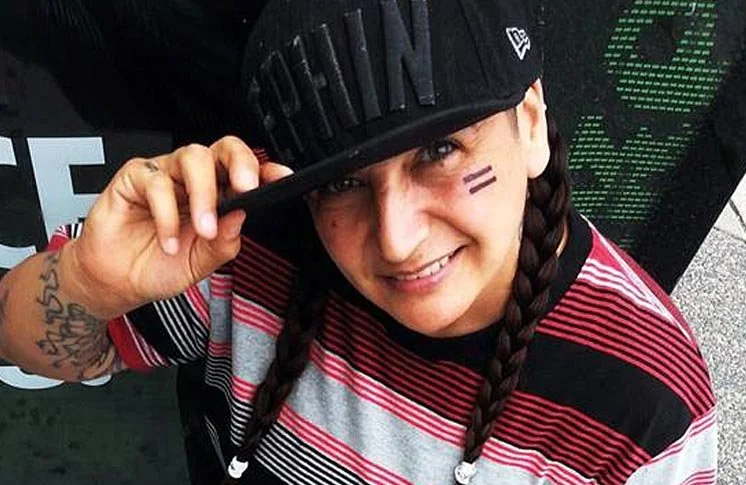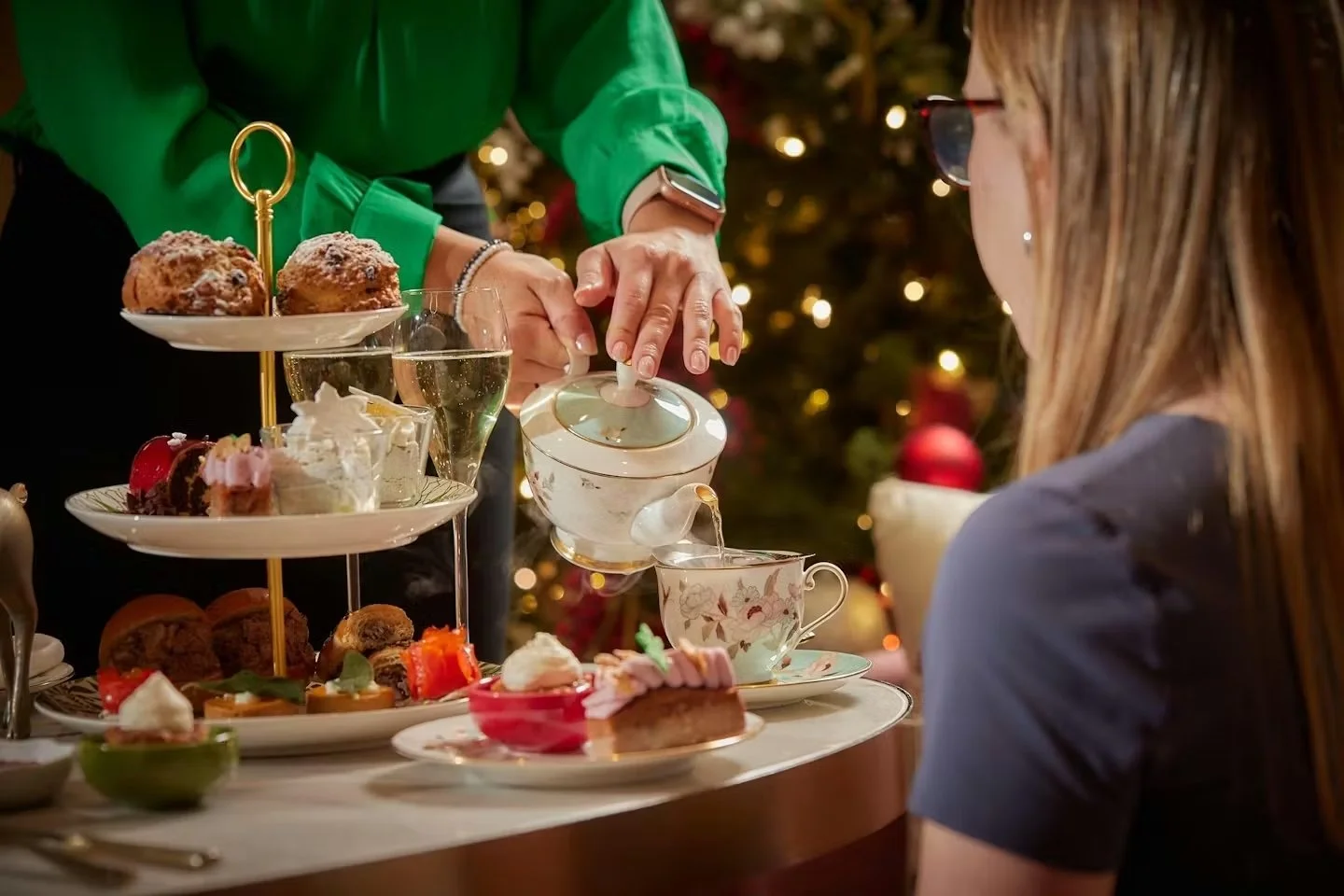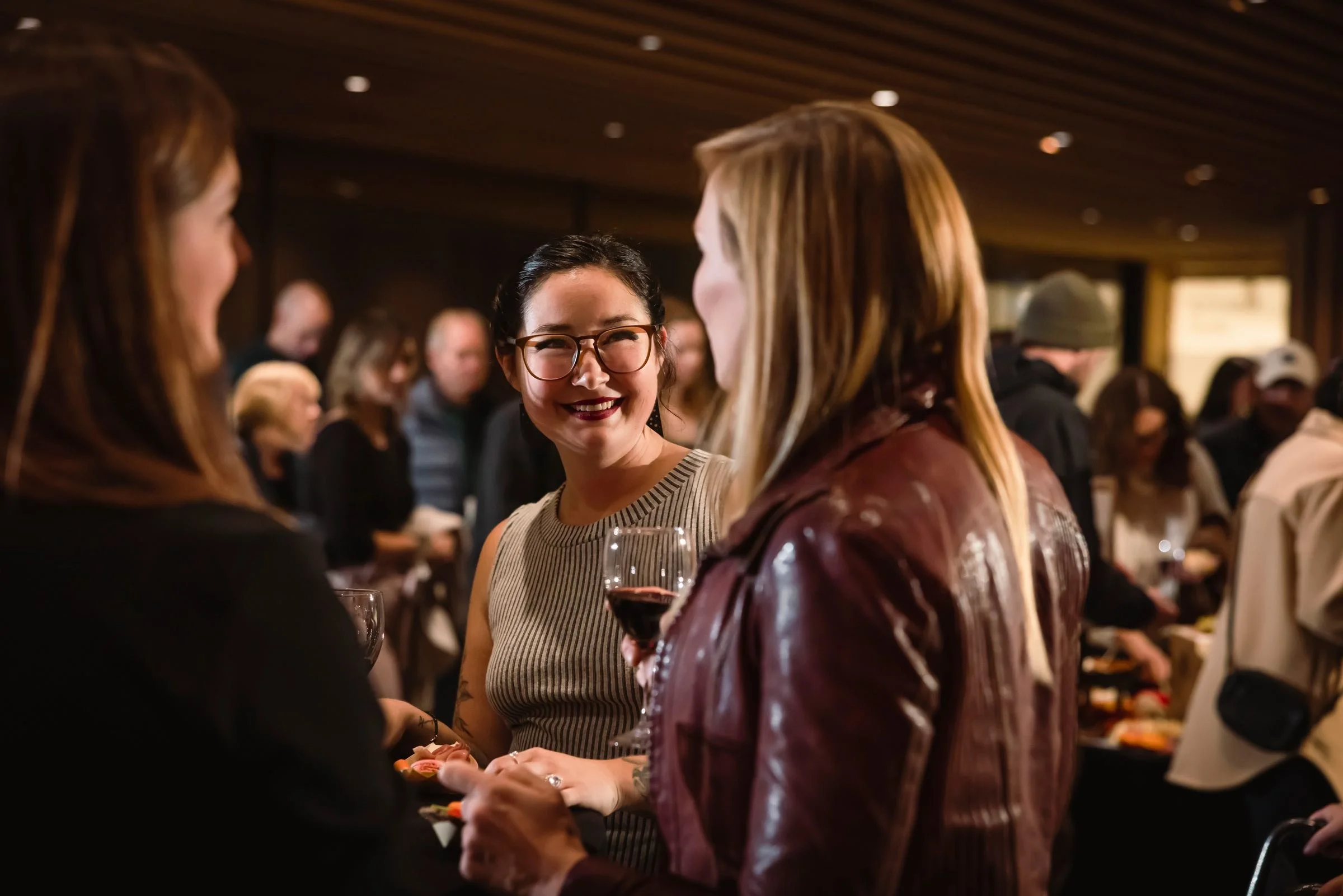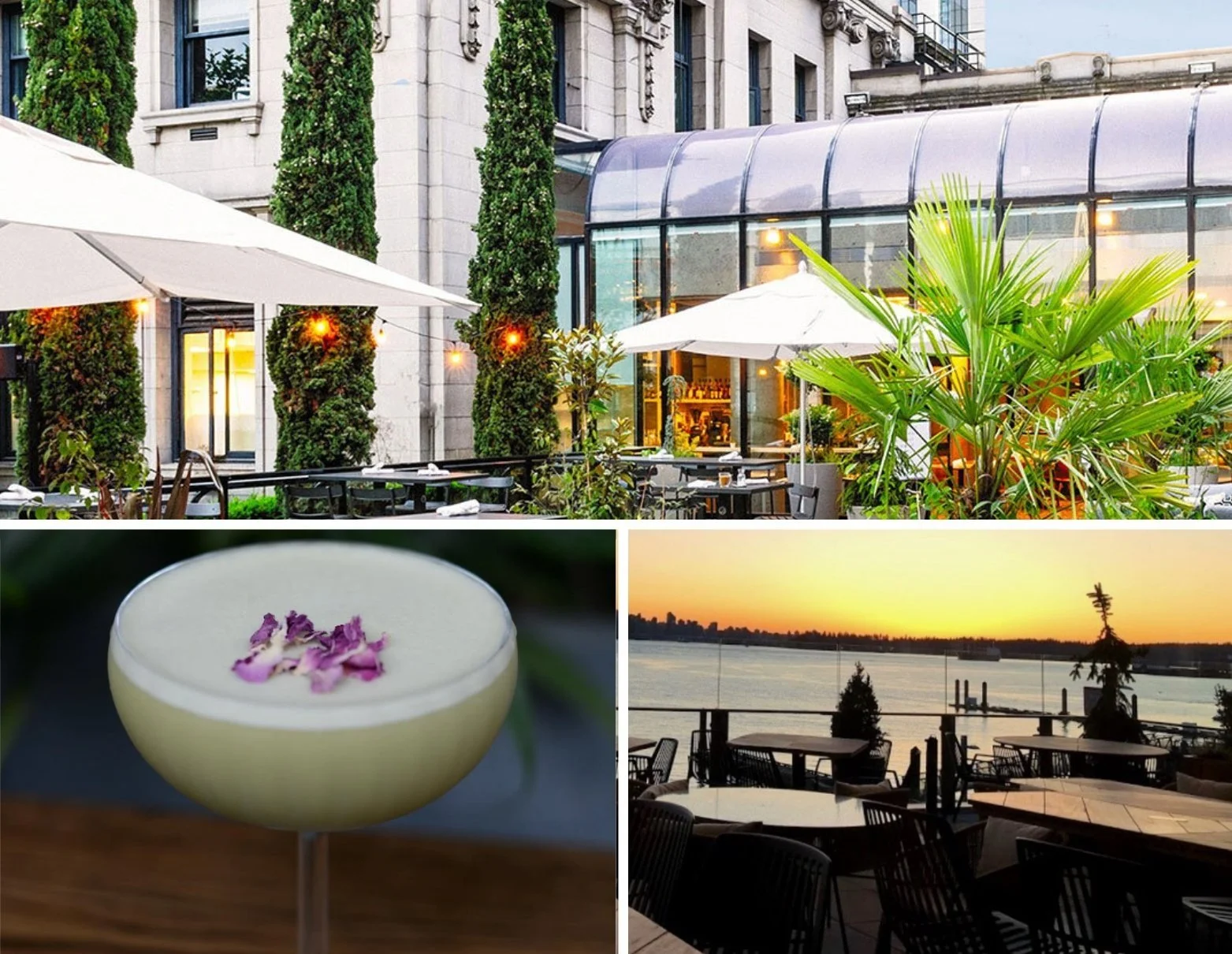Downtown Eastside Heart of the City Festival shares stories that need to be heard
Larissa Healey is among 30 DTES artists being featured in WE LIVE HERE, one of the 18th annual fest’s 100-plus events
Larissa Healey is a visual artist, muralist, and grass dancer.
Vancouver Moving Theatre in association with Carnegie Community Centre, the Association of United Ukrainian Canadians, and numerous community partners present the 18th annual Downtown Eastside Heart of the City Festival, in person and online, from October 27 to November 7.
LARISSA HEALEY (Anishinabek), whose ancestral name is Nimi koonz (Little Dancing Bear), is a graffiti artist and muralist whose works have covered not only public places throughout the city but also the walls of the Vancouver Art Gallery, Bill Reid Gallery, the National Gallery of Canada, among others. A Two Spirit grass dancer who also goes by the name Gurl23 and who works with at-risk and Indigenous youth, she calls the Downtown Eastside home. Despite the challenges the neighbourhood faces, she finds much to love about it.
“It’s just an abundance of creativity,” Healey tells Stir in a phone interview. “I love the honesty, the brutality, the freedom of art on the walls, the bartering, the trades on the street. I found more of a community there than my experiences working with corporate world and contracting with adverting firms. It’s raw. It’s a different kind of truth.”
Healey is one of 30 Downtown Eastside artists who is being featured in WE LIVE HERE, a large-scale outdoor video exhibition of visual art that will be projected on the side of a building in the area as part of the 18th annual Downtown Eastside Heart of the City Festival. Produced by Radix Theatre Society in association with the Portland Hotel Society and Heart of the City, WE LIVE HERE is among the many highlights of the 2021 fest.
Vancouver Moving Theatre’s Downtown Eastside Heart of the City Festival aims to foster and promote the development of artists, art forms, cultural traditions, activism, and more in the area, including Chinatown, Gastown, Hastings Street corridor, Strathcona, and Powell Street.
A free community-based project, WE LIVE HERE captures the creation of works by neighbourhood artists on video. A 15-minute loop will play at hyper-speed in the projection that’s nearly 50 feet wide and 24 feet tall. Taking place from 8 to 9:30 pm on October 27, 28, and 29 on a wall at the Jack Chow Insurance parking lot (500 block Carrall Street at East Pender), each evening will feature a different group of artists who took inspiration from the phrase “we live here”.
For her work, Healey, who is a member of the Sixties Scoop generation, reclaimed Disney characters—“their rendition of our people isn’t exactly on point,” she says.
“That experience was amazing,” Healey says of being involved in WE LIVE HERE. “It was really nice to be with fellow artists and feel good about what we do. There are some really beautiful things happening here.”
WE LIVE HERE has been in the making for many years, explains Radix artistic producer Andrew Laurenson. For 13 years, the Radix office was at Pender and Abbott Streets in the Duncan building, and during the lead-up to the Olympics, as DTES residents were being evicted for the two-week event, the team had wanted to bring to fruition their idea of supporting residents to express themselves through public art. Obtaining funding at the time, however, proved unsuccessful—and extremely frustrating, Laurenson says, considering the area is historically underserved.
Determined to see the project come to life, Radix kept at it, executing a test run just before the pandemic hit with 10 artists. Funding for WE LIVE HERE’s upcoming Heart of the City premiere allowed the team to compensate everyone involved.
Ken Foster is one of 30 Downtown Eastside artists featured in WE LIVE HERE. Photo by Israel Seone
“There are so many artists who live in Downtown Eastside or have some connection to it,” Laurenson says. “We’re really trying to make sure we support the artists there. We’re trying to create a form, a structure, for them to express themselves.”
Working with artists in the area has been eye-opening and inspiring, Laurenson says.
“For me personally it’s been really great to work with people there because even though my office was in the Downtown Eastside for 13 years, I really never connected with the people there. With this project I’ve been learning about their lives and their struggles. Despite their struggles, you can feel their humanity in trying to express something through their art. That’s why I love this project—furthering the act of creativity as a healing tool, as a form of self-expression, and what that can do for your confidence, and to show to other people these are thinking, feeling people. People tend to dehumanize them. Yes, the place is full of struggles, but we can’t forget that they’re humans.”
The theme of the 2021 Heart of the City Festival is Stories We Need to Hear. Tales of all types will be shared in more than 100 in-person and online events including music, poetry, theatre, ceremony, films, readings, forums, workshops, walking tours, discussions, and more. It all kicks off on October 27 at 4 pm, with the opening launch being live streamed from the Carnegie. Healey will perform as a grass dancer during the kickoff celebration.
Grass dancing originated as a way for high grasses to be flattened to create an area for settlement, ceremony, or a tribal meeting. Today, it is a spiritual, healing artform for many, including Healey, who also considers it a responsibility and an honour. The regalia she wears to perform in weighs 21 pounds and yet she doesn’t feel its weight.
“I always feel light and free and where I should be in time,” Healey says. “I have had elders come up to me and say ‘when you dance, you seem to float.’ It’s like a meditative state. I’m very grateful to have found this and to be able to express myself this way.”
Larissa Healey is a visual artist and grass dancer who is participating in the 2021 Downtown Eastside Heart of the City Festival. Photo by David Cooper
A sampling of other fest happenings includes: Art in the Streets, with pop-up music and spoken word activities on sidewalks and small plazas throughout the historic district; Honouring Our Grandmothers Healing Journey Launch, which unfolds over three days of ceremony, teachings, and storytelling; and Indigenous Journeys: Solos by Three Women, featuring local artists Priscillia Mays Tait (Gitxsan/Wet’suwet’en), Kat Zu'comulwat Norris (Lyackson First Nation), and Gunargie O’Sullivan aka ga'axstasalas (Kwakuilth Nation). My Art Is Activism: Part III sees long-time Downtown Eastside resident Sid Chow Tan sharing videos from his extensive archival collection that highlight Chinese Canadian social movements and direct action in Chinatown, particularly redress for Chinese head tax and exclusion. In Openings: A Cultural Sharing, storyteller Rosemary Georgeson (Coast Salish/Sahtu Dene) and Firehall Arts Centre artistic producer Donna Spencer will host stories of resilience, hope, and humour by Indigenous elders, knowledge keepers, and artists from different nations. Grace Eiko Thomson: Chiru Sakura (Falling Cherry Blossoms) offers a reading by the local elder and activist from her book, which chronicles her and her mother’s experiences with racism and her advocacy for the rights of Canadians of Japanese ancestry.
Then there’s 50 Years of Creative Collaboration: Terry Hunter & Savannah Walling, which highlights the creative journey of the two Vancouver Moving Theatre and Downtown Eastside Heart of the City Festival co-founding directors. The pair met at SFU in 1971 and have been partners in art and life ever since and have lived in the Downtown Eastside since 1976. (Two events mark their 50th anniversary: a retrospective photo exhibit at the Carnegie 3rd floor Gallery, running throughout the festival; and an online conversation and photo sharing with special guests on October 31 at 1 pm.)
Terry Hunter and Savannah Walling have lived in the Downtown Eastside since 1976. Photo by David Cooper
Hunter says he and Walling see themselves as stewards of festival on behalf of the community. Having a sense of kinship has become that much more important for residents of the Downtown Eastside recently amid the impacts of COVID-19 pandemic and the ongoing opioid crisis.
“This is all about them, and we’re there to support the community,” Hunter says in a phone interview with Stir. “The festival so important to the community as a means to connect and share stories and share artwork and have a voice—all those good things. The festival is an opportunity for people to shine, to share their work, to be heard, to get paid, to have a job, to celebrate, to see other artists.
“When you have an event like this, it’s really kind of an open house where the community shares with each and invites the larger public to share and learn from us,” he says. “It’s a way for people to catch up, share stories, to be able get together in a safe environment and have a good time together—or to sit down and listen to something that’s really hard, to grapple with the issues that we’re very much experiencing and living.
“This is a community that cares for each other,” Hunter adds. “We have a huge amount of problems, but I notice all the time the huge amount of care and understanding here. That’s what keeps up going—we’re there to support our community to share their lived experiences in a truthful and powerful way. These are stories that really, really need to be heard.”
For more information, see https://www.heartofthecityfestival.com/.
















